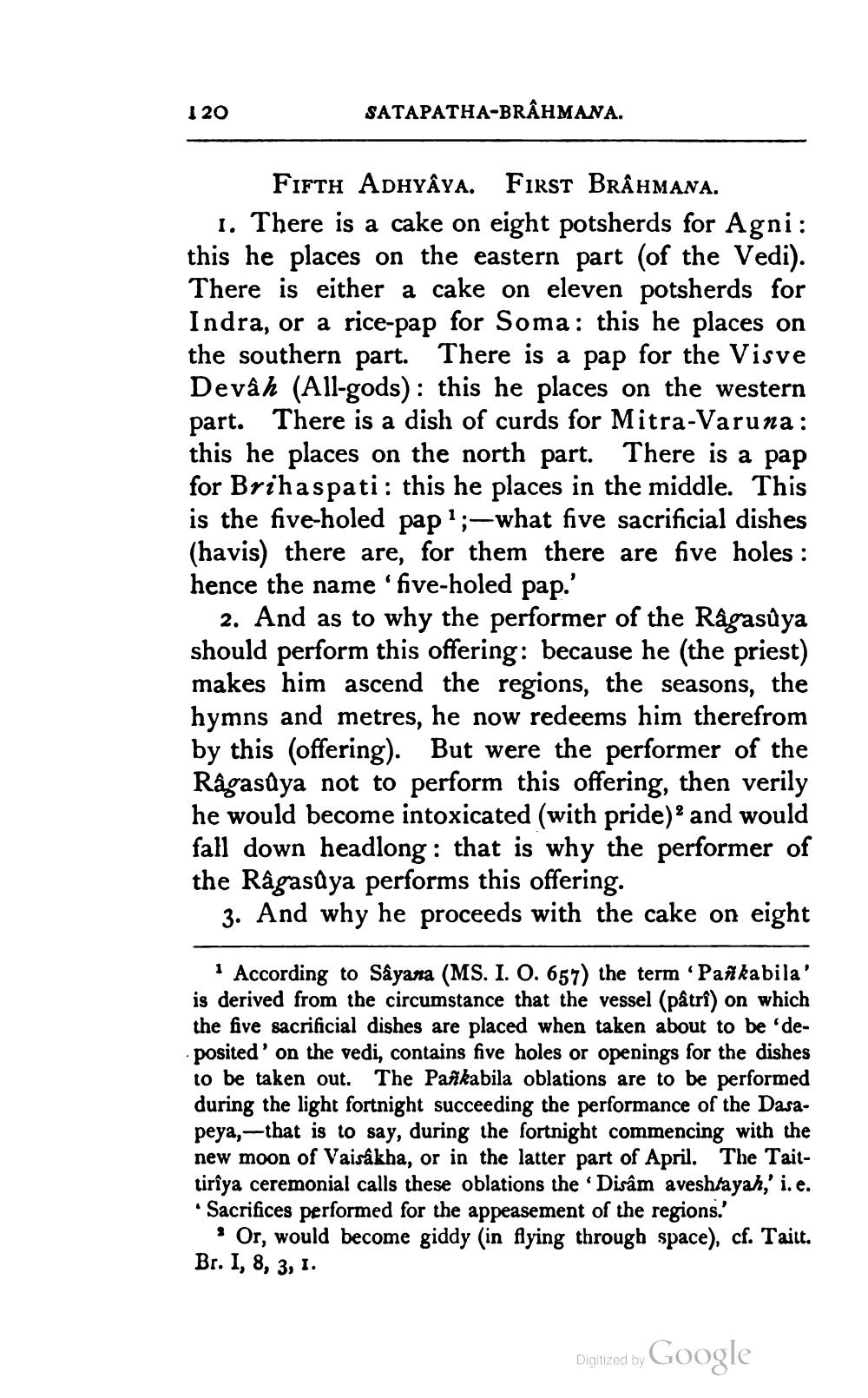________________
120
SATAPATHA-BRAHMANA.
FIFTH Adhyâya. First BRÂHMANA. 1. There is a cake on eight potsherds for Agni: this he places on the eastern part (of the Vedi). There is either a cake on eleven potsherds for Indra, or a rice-pap for Soma: this he places on the southern part. There is a pap for the Visve Devâh (All-gods) : this he places on the western part. There is a dish of curds for Mitra-Varuna: this he places on the north part. There is a pap for Brihaspati: this he places in the middle. This is the five-holed pap 1;-what five sacrificial dishes (havis) there are, for them there are five holes : hence the name 'five-holed pap.'
2. And as to why the performer of the Râgasửya should perform this offering: because he (the priest) makes him ascend the regions, the seasons, the hymns and metres, he now redeems him therefrom by this offering). But were the performer of the Ragasûya not to perform this offering, then verily he would become intoxicated (with pride) and would fall down headlong: that is why the performer of the Râgasůya performs this offering.
3. And why he proceeds with the cake on eight
1 According to Sâyana (MS. I. O. 657) the term 'Pañkabila' is derived from the circumstance that the vessel (pâtri) on which the five sacrificial dishes are placed when taken about to be deposited' on the vedi, contains five holes or openings for the dishes to be taken out. The Pankabila oblations are to be performed during the light fortnight succeeding the performance of the Dasa. peya, -that is to say, during the fortnight commencing with th new moon of Vaisakha, or in the latter part of April. The Taittirîya ceremonial calls these oblations the Disâm aveshtayah,' i.e. Sacrifices performed for the appeasement of the regions.'
• Or, would become giddy (in flying through space), cf. Taitt. Br. I, 8, 3, 1.
Digitized by Google




